Racism and other forms of discrimination affect multiple parts of society. This is because it exists everywhere. Discrimination exists in education, housing, and the justice system. The presence of discrimination in these areas has very negative effects on our lives. However, discrimination in health care has potentially deadly effects.
Effects of Racial Disparities in Healthcare
Racism prevents people of color from receiving the same quality of treatment that whites receive. “Compared with whites, members of racial and ethnic minorities are less likely to receive preventive health services and often receive lower-quality care. They also have worse health outcomes for certain conditions.” One might think that these disparities exist simply because of factors such as income and types of health insurance, but even after taking factors like these into account, health outcomes among Black people in particular were still worse than whites. There are multiple reasons for this difference, but one of the primary reasons is racial bias from healthcare providers.
Racial Bias from Healthcare Providers
Racial bias exists in the minds of many Americans. The minds of healthcare providers are no exception. Despite being highly educated, some white medical trainees hold shocking ignorant beliefs about Black people’s anatomy. These false beliefs include statements such as: “Black people’s skin is thicker than whites,” “Blacks age more slowly than whites,” “Blacks’ nerve endings are less sensitive than whites,” and “Black people’s blood coagulates more quickly than whites.” Another study conducted at the University of Virginia found that out of 222 white medical students and residents, half had false physiological beliefs about African-Americans. In addition to this, 60 percent believed that black people have thicker skin and 12 percent believed that black people had less nerve endings than white people. As one can imagine this has adverse effects. The people who held these false beliefs are more likely to rate the pain of a black patient as less severe than that of an otherwise identical white patient and less likely to recommend treating black patients’ pain. These false beliefs are preventing black people from receiving proper treatment for their pain. This is made clear by the fact that a meta-analysis of 20 years of studies covering many sources of pain in numerous settings found that Black/African American patients were 22 percent less likely than white patients to receive any pain medication. Another study on actual patients with metastatic or recurrent cancer reported that only 35 percent of minority patients received the appropriate prescriptions as compared with 50 percent of nonminority patients.
Why Do These Disparities Exist?
The racial biases that are held today are partially fueled by stereotypes and depictions of Black people in media. However, it is important to remember that racism in the medical field has a very long history and is very widespread. Nineteenth-century scientist Louis Agassiz was a major proponent of “polygenism.” Agassiz claimed that human races were distinct species, white people were biologically superior to blacks, and that black people were destined for extinction. Sadly, Agassiz wasn’t the only person to promote racist, untrue claims about black people. Physician Samuel Cartwright made claims of illness that he called “drapetomania.” He claimed the disorder caused black slaves to flee captivity and that it happened as a result of slave masters who “made themselves too familiar with the slaves, treating them as equals.” He also made claims of a mental illness called “dysaethesia aethiopica” which according to him caused slaves to be lazy and disrespect their master’s property. Despite these claims being absolutely ridiculous, they clearly have had a lasting impact.
How to Combat These Disparities
It is important that we work to remove these disparities. Black people should not have to receive poorer quality treatment simply because of their skin color. There are many ways to fight this. However, the easiest and simplest way to fight these issues is to educate people. Medical training programs should make an effort to dispel misinformation about biological differences between races. Medical professionals holding false beliefs about Black people’s anatomy are harmful and unacceptable. It is impossible to remove the racial disparities in health care if the people administering medical treatment hold such untrue beliefs.


